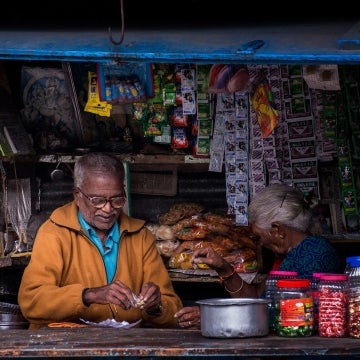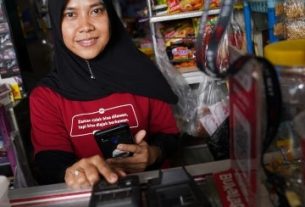Open finance in India has grown rapidly in the last year. As of December 2024, 120 million accounts had been linked through Account Aggregators (AAs) – India’s version of open finance – up from 39 million in December 2023. According to Sahamati’s annual report, more than 570 regulated financial entities were a part of the AA ecosystem as of October 2024, and over USD 10 billion in loans have been disbursed since the launch of the ecosystem in September 2021, with the last six months (April to September 2024) accounting for half of the total lending.
Last year, CGAP shared findings from customer research conducted in late 2023 to assess awareness, understanding, and adoption of AAs among individual smartphone users in India. Comparable customer research conducted in late 2024 by CGAP and Sahamati with 1,860 smartphone users offers insights on key drivers of AA adoption and areas for improvement to enhance customer experience. Notably, customer awareness has significantly improved since the first survey, with respondents more willing to share data because of the convenience and trust in the ecosystem.
Key findings
Lending journey
The proportion of respondents choosing to share data for loan applications through AAs doubled between 2023 and 2034
In 2024, 20% of respondents said they had applied for a loan in the last 18 months. Of those, 38% recalled being offered the possibility to share data through AAs and 21% recalled using it, up from 10% who recalled using it in 2023. (See Figure 1 for more details.) Still, the number of respondents using AAs for loans accounted for just 3% of the total sample since 80% of respondents had not applied for a loan in the last 18 months.
Figure 1: Uptake of AA for loans
Respondents who shared their banking data as part of a loan application process primarily did so to improve the conditions of their offer
Higher loan amounts and better interest rates were the top factors that motivated respondents to share their banking statement data (see Figure 2). For one-fifth of the respondents, sharing their bank statement data was a prerequisite for getting a loan.
Figure 2: Motivation to share data for better loan offers
Awareness of AAs increased between 2023 and 2024
In 2024, 30% of respondents who had not engaged with AAs in the loan process reported having heard of AA services before when they were described to them, up from 12% in 2023. However, similar to 2023, awareness differed by demographic (see Figure 3). While awareness grew for both male and female respondents, the gap between male and female respondents also grew from three percentage points in 2023 to 10 percentage points in 2024. Respondents with at least upper secondary education were significantly more aware of AA services than those without, at 35% and 18%, respectively. In terms of employment, salaried employees were the most aware, while unemployed respondents were the least aware.
A majority of respondents (79%) found Reserve Bank of India (RBI) campaigns effective in building awareness and trust, with 33% rating them very effective and 46% somewhat effective. CGAP, BIS, IMF, UNSGSA, and the World Bank recently published high-level guidance for financial sector authorities looking to implement, implementing, or improve open finance frameworks. The report highlights the importance of investing in Consumer Information and Awareness as a way to drive adoption and strengthen consumer protection in open finance, especially for traditionally excluded and underserved segments.
Figure 3: Awareness of AAs
Most respondents would consider sharing data through AAs in exchange for better loan offers
About 71% of respondents said they would consider sharing data through AAs in exchange for better loan offers in the future, up from 33% in 2023 (see Figure 4). Those willing to share their data increased from 18% to 30%, while those willing to consider it increased from 15% to 41%. Respondents who were willing to share their data mentioned convenience and trust in the bank/lender as the primary reasons for this willingness. For those who were not willing to use AAs, the primary reasons included not understanding the process and not knowing anyone who had used it before.
Figure 4: Willingness to use the AA
Personal Financial Management (PFM) journey
PFM has emerged as an important use case of consent-based data sharing
Over 25% of respondents reported using a consent-based process to share data with PFM apps to track their finances or to have an aggregate view of their accounts. Some 69% of respondents who opted to share data through the consent-based process said they were motivated to use the process due to its convenience and ease of use. In terms of demographics, we see trends similar to those found in awareness of AAs, with differences in gender, education, and employment (as shown in Figure 5).
Figure 5: Uptake of the consent-based process for PFM

Experience
Respondents report a positive experience while using the AA process for both loans and PFM
Respondents who opted for the consent-based sharing process for loan applications reported a positive experience overall, with 85% finding the experience to be ‘good’ or ‘very good’. Similar to the lending journey, 86% of respondents who opted for the consent-based sharing process for PFM applications reported a positive experience overall, with over half of the respondents rating their experience with the consent-based sharing process as ‘good’, and 34% rating it as ‘very good’.
India’s open finance revolution is gaining momentum, with growing awareness and willingness to use AAs. To sustain this progress, strengthening trust through transparent communication and increasing awareness of the consent-based AA process will be key. India has set financial inclusion, along with innovation, competition, and customer empowerment, as the key objectives of its AA framework. AAs have the potential to transform financial inclusion by streamlining loan applications, simplifying PFM, and enabling lenders to assess creditworthiness using transactional data — which could benefit those with thin or no credit histories. However, our research highlights challenges that must be addressed as the ecosystem matures. Gaps in awareness and adoption among women and individuals with limited formal education point to the need for targeted interventions to make the ecosystem more inclusive. Continuing to innovate, expanding use cases, and prioritizing inclusivity will be important to achieve the full potential of the ecosystem for financial inclusion.



